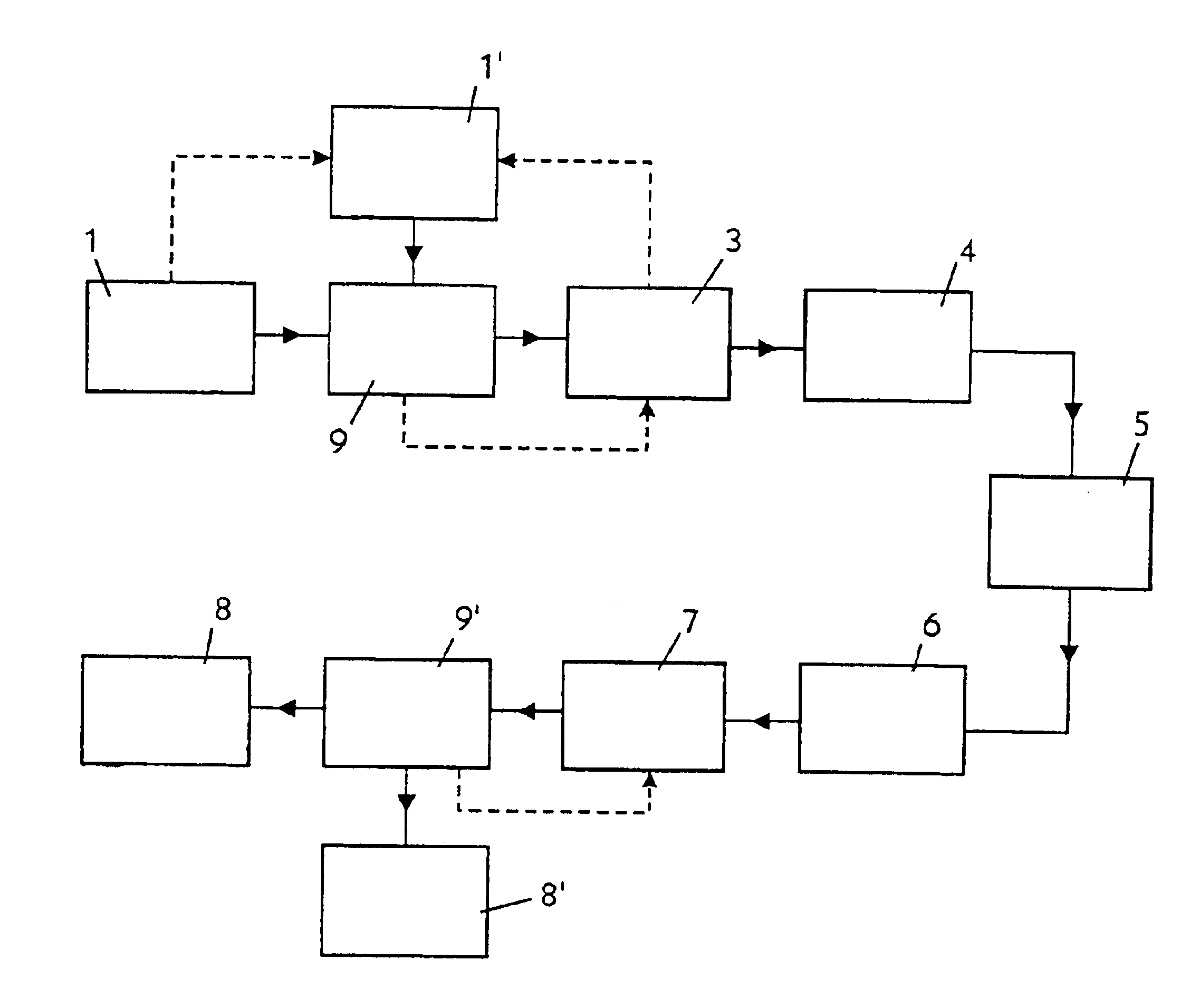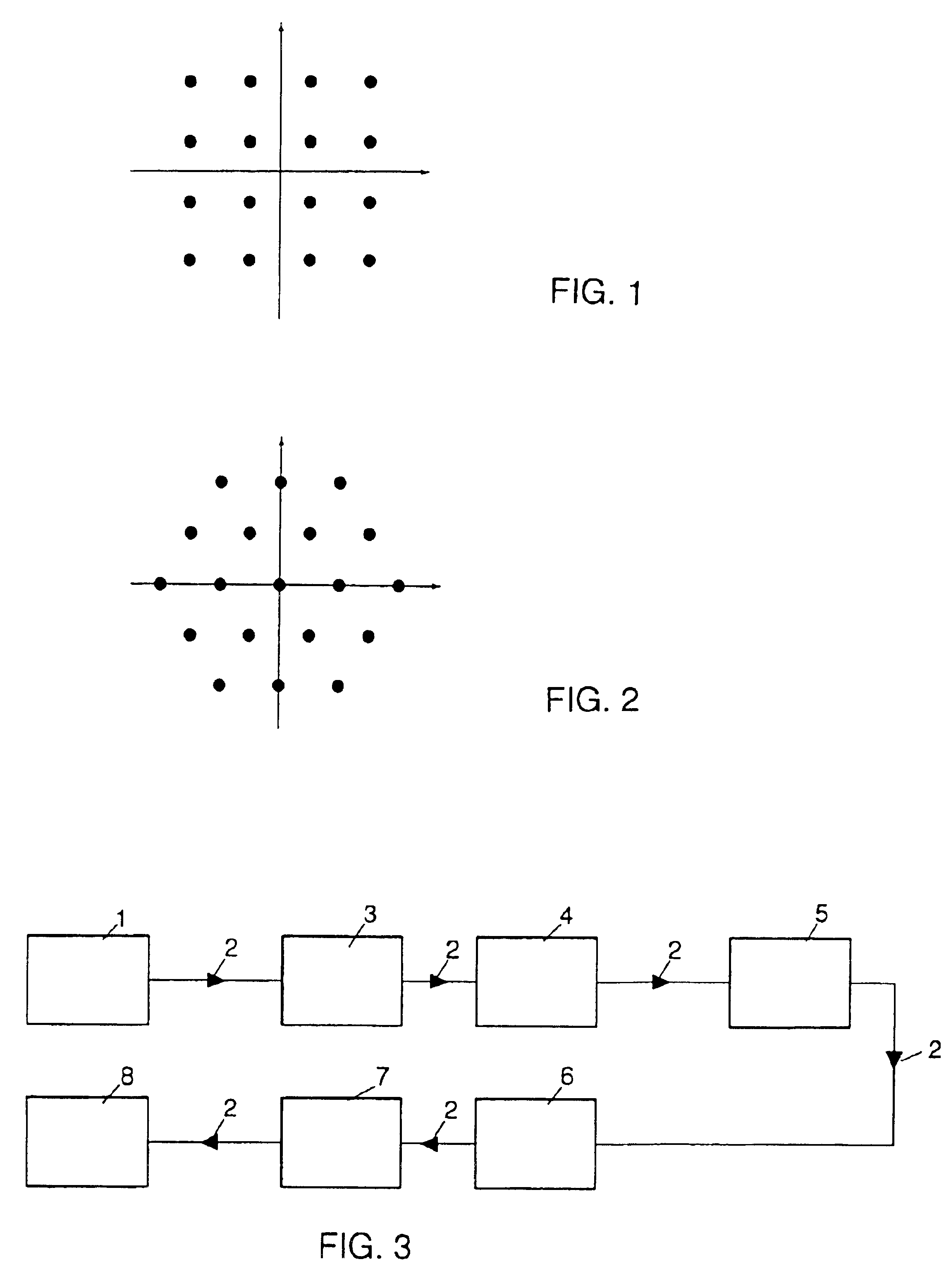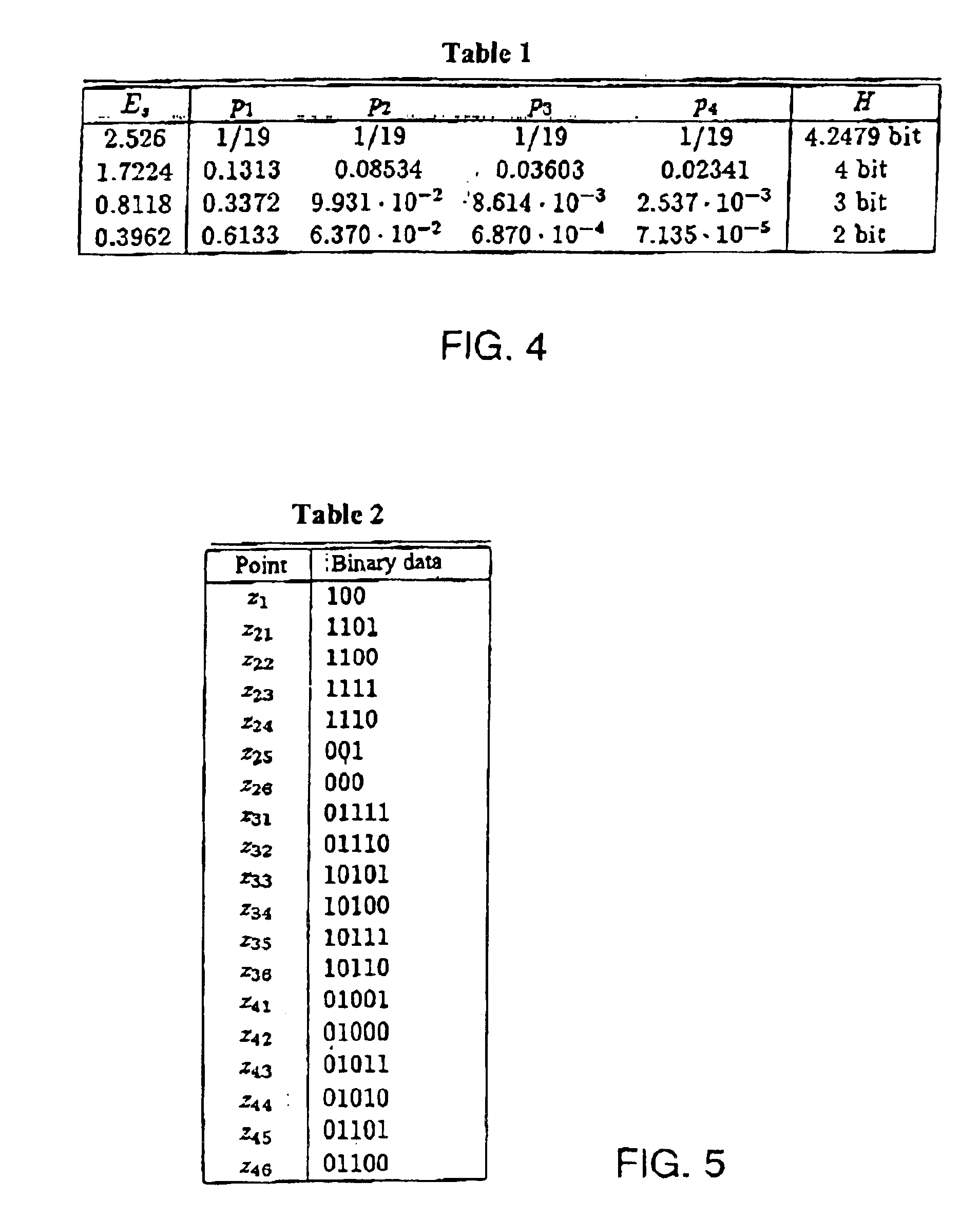Method and circuit arrangement for improved data transmission
a technology of data transmission and circuit arrangement, applied in the direction of transmission, multiple carrier system, modulated carrier system, etc., can solve the problem of number of signal points, achieve optimal use of signal energy, improve data transmission, and improve the effect of data transmission
- Summary
- Abstract
- Description
- Claims
- Application Information
AI Technical Summary
Benefits of technology
Problems solved by technology
Method used
Image
Examples
Embodiment Construction
[0019]As stated above, known transmission methods employ orthogonal basis functions to represent the signal to be transmitted. In this case, a message signal s(t) is represented as the sum of orthogonal basis functions. A message signal can be regarded as a point in a K-dimensional space. The entirety of all permissible signal points is referred to as a signal constellation, the “16-QAM” signal constellation shown in FIG. 1, which represents one of the two-dimensional signal constellations, being especially popular.
[0020]If a signal constellation has a total of M signal points, Mj of each of which have the signal energy Ej, and if the probability for the occurrence of such a signal point is equal to Pj, then, by setting the probabilities according to the formula given below, one obtains the values which are optimal according to power / information rate for that power. The value L indicates how many different energy levels occur in total.
(Ej−E1) / (EL−E1)
pj=p1(pL / p1) j=1,2, . . . , L an...
PUM
 Login to View More
Login to View More Abstract
Description
Claims
Application Information
 Login to View More
Login to View More - R&D
- Intellectual Property
- Life Sciences
- Materials
- Tech Scout
- Unparalleled Data Quality
- Higher Quality Content
- 60% Fewer Hallucinations
Browse by: Latest US Patents, China's latest patents, Technical Efficacy Thesaurus, Application Domain, Technology Topic, Popular Technical Reports.
© 2025 PatSnap. All rights reserved.Legal|Privacy policy|Modern Slavery Act Transparency Statement|Sitemap|About US| Contact US: help@patsnap.com



